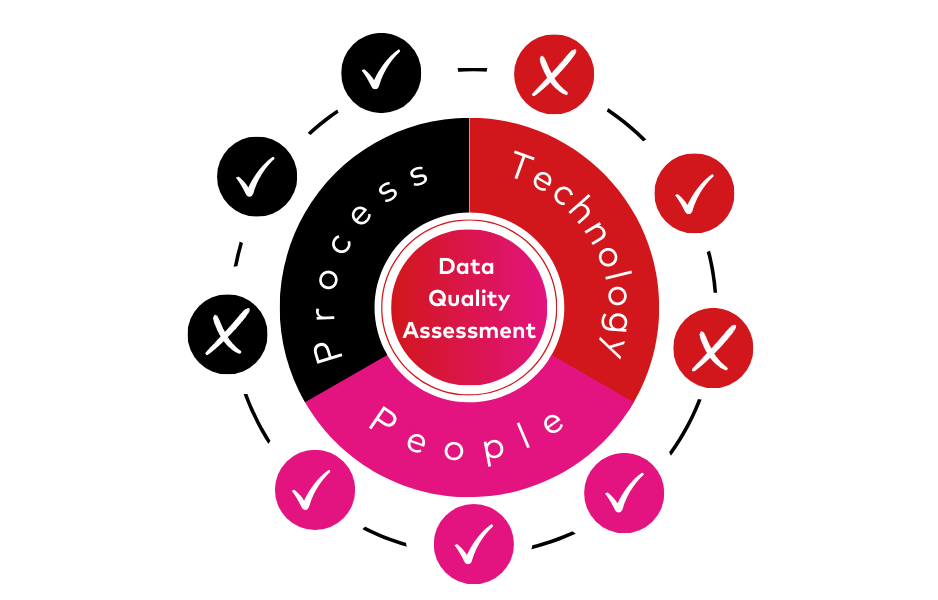
Is your organization ready for AI?
Test your organizationTake the Data Quality Assessment
Find out if your organization is ready for AI

This assessment will give you an insight into your Data Quality maturity and therefore:
- Lets you know where you stand on Data Quality
- Gives insight in your readiness for AI
- Shows where you have room for improvement
On average the test takes approximately 10 minutes. If you have any questions, do not hesitate to contact us!
Data Quality is crucial for accurate and reliable data, and it is closely tied to Data Governance. A strong Data Governance framework serves as the foundation for achieving enterprise-scale data quality. It involves defining roles and responsibilities, orchestrating data lifecycle management, establishing a business glossary, enabling data lineage for impact analysis, identifying sensitive and critical data, educating data consumers, and incorporating centralized and standardized processes.
By focusing on data quality within a robust Data Governance framework, organizations can ensure the integrity and trustworthiness of their data. The trustworthiness of data is essential for the successful implementation and operation of AI systems. AI relies heavily on the data it is trained on to make accurate predictions and decisions. If the underlying data is of poor quality or untrustworthy, it can lead to biased or erroneous outcomes in AI algorithms. Therefore, ensuring data quality and establishing trust in the data used for training and deploying AI systems is critical for their effectiveness and reliability.
With a broader view of data we help companies encompassing lineage, provide context, create business impact, enhance data performance, and improve the quality of data, this allows for a comprehensive understanding of the end-to-end data value chain.
A perspective that enables proactive tracking of the health of enterprise data systems, ensuring awareness of potential data issues. It facilitates the identification, troubleshooting, and resolution of data issues in near real-time. By providing sufficient context, data engineers and data scientists can effectively address issues and initiate conversations to prevent similar problems from recurring in the future.
